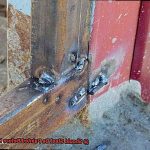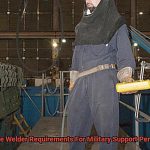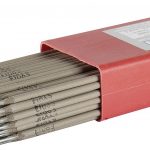Are you a metalwork enthusiast?
Perhaps you’ve heard of soldering and welding. These two techniques are used to join metals, but they are not interchangeable.
Did you know that each has its unique characteristics? Soldering and welding have been around for centuries, and both processes have their advantages.
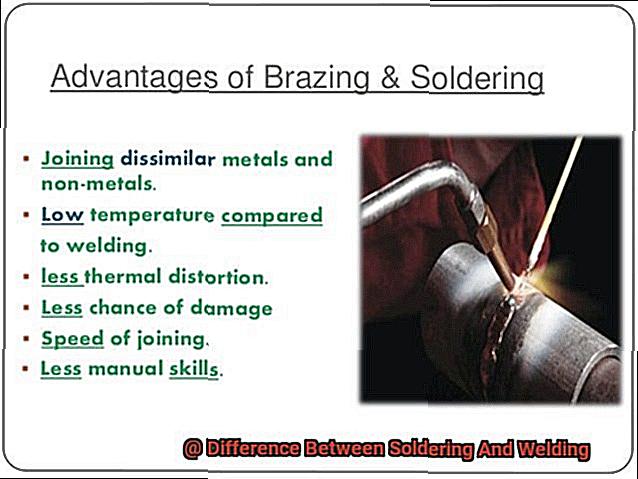
Soldering involves melting a soft metal alloy and using it to fuse two other metals together. Welding, on the other hand, is a more robust and heat-intensive process that involves melting the metals being joined and fusing them when they cool.
While soldering and welding may seem similar due to their use of heat, they differ in terms of materials used, joining methods, and final results. Soldering is commonly used in jewelry making and electronics due to its softer process that requires less heat.
It’s ideal for joining metals with different properties. Welding is often used in construction and automotive repair because it produces a stronger bond while requiring high heat and expensive equipment.
In this blog post, we will delve deeper into these two methods, explore their pros and cons, provide practical advice on how to choose the right method, so stay tuned.
What is Soldering?
Contents
Then you’re likely to come across the process of soldering.
Soldering is a technique used for joining two metal pieces together using a filler metal known as solder. In this article, we’ll explore what soldering is and the various types of soldering techniques.
Soldering involves heating the solder until it melts and then using it to bond two metals together. The heat source can be a soldering iron or a torch, making the process relatively simple and accessible for DIY enthusiasts.
As the solder flows between the two metals, it creates a strong bond. There are different types of soldering techniques depending on the application.
Soft soldering is commonly used for joining metals with low melting points such as copper, brass, and aluminum. On the other hand, hard soldering is used for joining metals with high melting points such as stainless steel and silver.
Lastly, silver soldering uses silver-based solders to create strong bonds between metals and is often used in jewelry making and other high-end applications. Soldering possesses several advantages over welding.
One of the primary advantages is that it creates a permanent bond between two metals without melting them. This makes it ideal for delicate or heat-sensitive materials that cannot withstand the high temperatures required for welding.
However, while soldered joints are durable, they may not be as strong as welded joints and may not be suitable for high-stress applications. In conclusion, understanding what soldering is and the various types of soldering techniques can help you determine which technique is best suited for a particular application.
Whether you’re making jewelry or repairing electronics, mastering the art of soldering is an essential skill that will serve you well in many projects to come.
What is Welding?
Welding is a fascinating art that involves joining two or more pieces of metal together by melting and fusing them.
This process is achieved by heating the metals to a very high temperature, causing them to melt and fuse together. Welding is an essential skill used in various industries such as construction, manufacturing, and repair work.
There are different types of welding methods, each with its advantages and disadvantages. Some of the most common welding methods include arc welding, gas welding, and resistance welding.
Arc welding creates an electrical arc between an electrode and the metal to melt it and fuse it together. Gas welding uses a flame created by mixing oxygen and acetylene gas to heat the metal to melting point.
Resistance welding uses an electrical current passed through the metal to create heat, which melts the metal and fuses it together. Welders must wear protective equipment such as gloves, helmets, and aprons during the process due to the high temperatures involved.
They must also follow safety guidelines and ensure that the workspace is well-ventilated to prevent exposure to harmful fumes or gases that may be produced during the welding process. Welding is an art that requires skill, practice, and safety precautions.
It’s a critical skill for many tradespeople and is commonly used in construction, manufacturing, and repair work. Arc welding is ideal for heavy-duty applications such as construction work, while gas welding is better suited to delicate work such as repairing jewelry.
It requires skill, practice, and safety precautions due to the high temperatures involved.
Temperature Requirements
Soldering is a process that joins two pieces of metal together using a filler metal with a lower melting point than the base metals.
This means that soldering typically requires lower temperatures, ranging from 200-400 degrees Celsius. The goal of soldering is to create an electrical or mechanical connection between two pieces of metal.
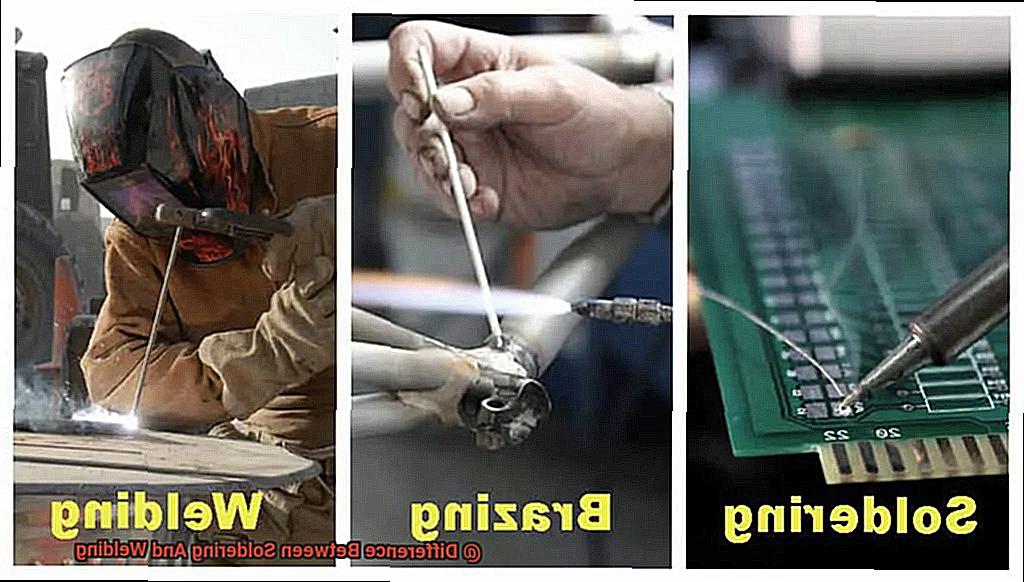
It’s commonly used in electronics, plumbing, and jewelry making. In contrast, welding involves melting the base metals together to form a strong bond.
This process requires much higher temperatures, typically up to 1500 degrees Celsius. Welding is commonly used in construction, manufacturing, and repair work where strength and durability are critical.
The type of solder or welding process being used also affects the temperature requirement. The composition and intended use of the solder can impact the necessary temperature for successful bonding, while different types of welding processes such as TIG or MIG welding may require varying temperatures and techniques.
Temperature control is essential in both soldering and welding to ensure a strong and durable joint. If the temperature is too low, the joint may not be fully formed or could break easily.
On the other hand, if the temperature is too high, it can cause damage to the materials being joined or result in a weak bond. In summary, understanding temperature requirements is crucial when it comes to deciding which process to use for your project needs.
Both processes require proper temperature control to ensure a strong and durable joint.
Strength of the Joint Created

Welding, a process of melting the base materials together, creates a bond that is as strong as the original materials themselves.
On the other hand, soldering involves melting a filler metal onto the surface of the materials being joined. While this can create a strong bond, it is not as strong as a weld.
Welding leads to stronger joints compared to soldering because it allows the metals to flow and fuse together. This process results in a bond that is exceptionally robust and can withstand significant stress and high temperatures.
On the contrary, solder joints are more susceptible to failure under stress or high temperatures. It’s important to note that solder joints are often used in applications where flexibility is needed.
In these cases, a weld joint may not be suitable as it is more rigid and less flexible than a solder joint. Several factors affect the strength of a solder joint, including the type of solder used, the amount applied, and the surface preparation of the materials being joined.
Choosing the right type of solder for your application and preparing surfaces appropriately can ensure a strong connection.
So, while welding creates a stronger joint than soldering due to the melting and fusion of the base materials being joined, soldering remains an excellent option depending on your application’s requirements.
Types of Metals Used
Commonly used metals for welding include steel, aluminum, copper, and titanium. Each of these metals brings unique properties to the table that make them ideal for certain applications.
For instance, steel is renowned for its strength and durability, making it perfect for structural applications like building bridges and skyscrapers. On the other hand, aluminum is lightweight and corrosion-resistant, which makes it a popular choice for transportation vehicles like airplanes.
In soldering, a metal alloy known as solder is melted onto a joint between two pieces of metal to create a bond. The types of metals used in the solder alloy can vary depending on the application.
Commonly used metals include tin, lead, silver, and copper. Lead-free solders are becoming increasingly popular due to environmental concerns about lead toxicity.
It’s essential to choose the right materials for welding and soldering to ensure that the finished product is strong, durable, and able to withstand its intended use. By understanding each metal’s unique properties, welders and solderers can select the best materials for their project.
_MISR0hfB00″ >
Advantages and Disadvantages of Soldering and Welding
Soldering is a low-heat method that is perfect for delicate or thin materials such as those found in electronics and jewelry making.
Solder fills in the gaps between two materials being joined, creating reliable and fast bonds. Plus, large quantities of items can be produced quickly.
However, soldered joints may not be as strong as welded joints when exposed to high stress or pressure. And, the use of toxic chemicals like flux can pose a health hazard if not handled properly.
Welding, on the other hand, produces strong and durable joints that can withstand high stress or pressure. It is ideal for industrial and construction applications and can be used on a wide range of materials.
Welded joints are visually appealing and clean, making them perfect for decorative purposes. But, high temperatures used in welding can damage delicate or thin materials.
Additionally, welding can be a slow and labor-intensive process that requires specialized training to use safely. Ultimately, your choice between soldering and welding depends on your specific application and materials being used.
Soldering is best for delicate or thin materials while welding is better suited for industrial or construction applications. By considering the advantages and disadvantages of each technique beforehand, you can ensure that your finished product is both strong and durable.
Also Read: Sharkbite vs solder? – The Welding Guru
Conclusion
In conclusion, soldering and welding are two indispensable techniques for joining metals.
Although they both involve heat, they differ significantly in terms of material selection, temperature requirements, joint strength, and metal compatibility. Soldering is a low-heat method that’s perfect for delicate or thin materials like those used in electronics or jewelry making.
It creates a permanent bond between two metals without melting them, making it ideal for heat-sensitive materials that can’t withstand high temperatures. Welding, on the other hand, produces robust and durable joints that can endure high stress or pressure.
It’s perfect for industrial and construction applications and can be used on a wide range of materials. Ultimately, your choice between soldering and welding depends on your specific application and materials being used.
By considering the advantages and disadvantages of each technique beforehand, you can ensure that your finished product is both strong and durable. Whether you’re an experienced metalworker or just starting out, mastering the art of soldering and welding is an essential skill that will serve you well in many projects to come.
So, understanding the differences between soldering and welding is crucial to achieving successful outcomes in your metalworking endeavors.


